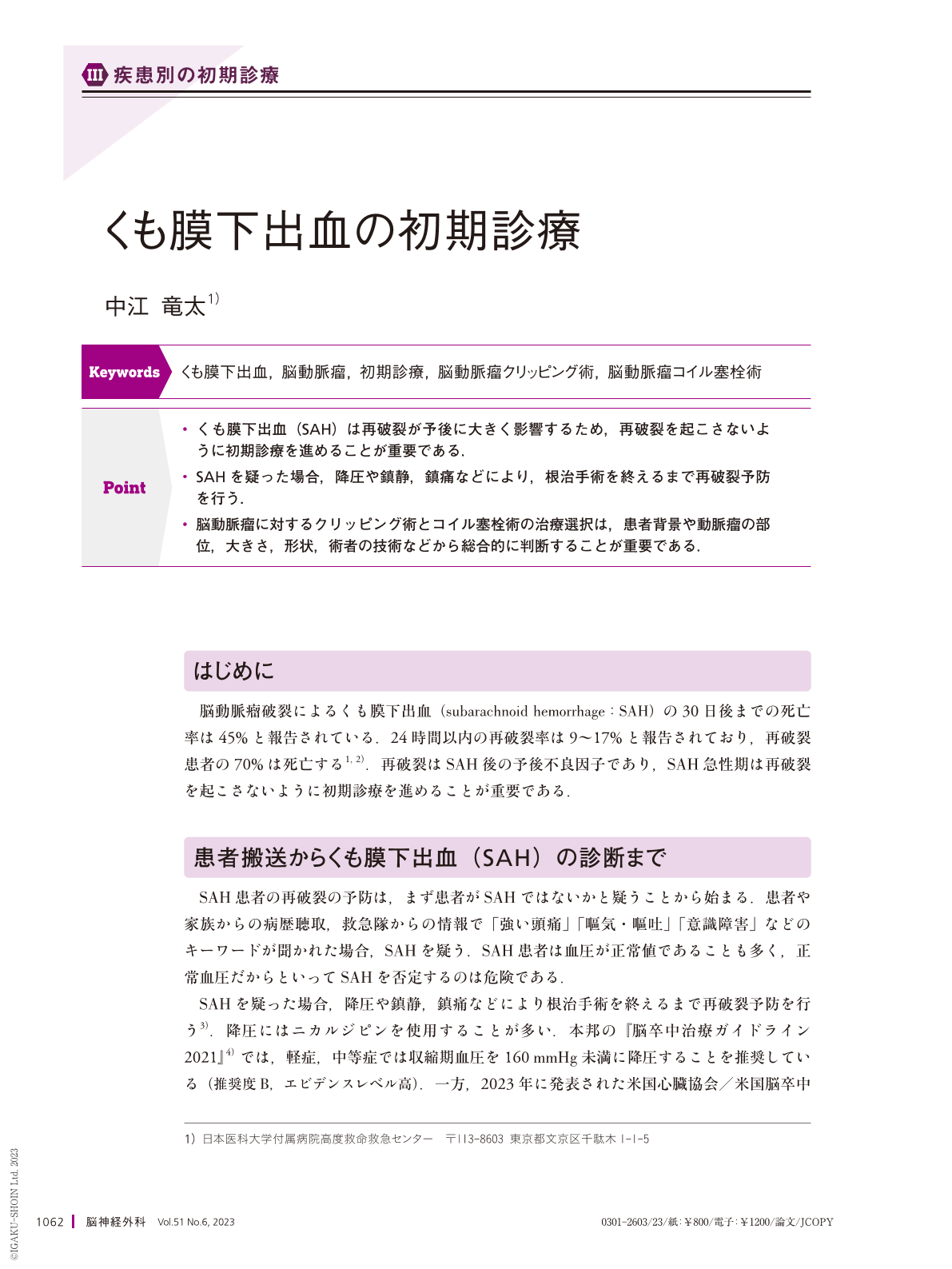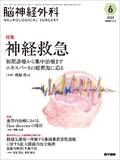Japanese
English
- 有料閲覧
- Abstract 文献概要
- 1ページ目 Look Inside
- 参考文献 Reference
Point
・くも膜下出血(SAH)は再破裂が予後に大きく影響するため,再破裂を起こさないように初期診療を進めることが重要である.
・SAHを疑った場合,降圧や鎮静,鎮痛などにより,根治手術を終えるまで再破裂予防を行う.
・脳動脈瘤に対するクリッピング術とコイル塞栓術の治療選択は,患者背景や動脈瘤の部位,大きさ,形状,術者の技術などから総合的に判断することが重要である.
The re-rupture of a subarachnoid hemorrhage(SAH)due to a ruptured cerebral aneurysm is a poor prognostic factor, and initial treatment to prevent re-rupture is important in the acute phase of SAH. Prevention of re-rupture is performed by reducing blood pressure, by sedation, and by analgesia until the patient undergoes radical surgery. It is recommended that the systolic blood pressure be lowered to below 120-140 mmHg. When SAH is suspected, a head CT scan should be obtained after the initial treatment. If the SAH is not clearly visible on CT but is strongly suspected, MRI should be performed. Once a SAH is diagnosed, three-dimensional CT angiography should be performed to search for cerebral aneurysms. SAHs may also cause breathing and circulation problems due to neurogenic pulmonary edema and Takotsubo cardiomyopathy.
Clipping is more curative than coil embolization, but coil embolization has been shown to have better long-term survival and independence rates than clipping for aneurysms that can be treated with either technique. Ideally, ruptured cerebral aneurysms should be treated at institutions that offer both clipping and coil embolization, and the choice of treatment should be based on a comprehensive assessment of the patient's age; the severity, location, size and shape of the aneurysm; the clipping and coil embolization techniques of the treating physician; and the wishes of the patient and family.

Copyright © 2023, Igaku-Shoin Ltd. All rights reserved.


